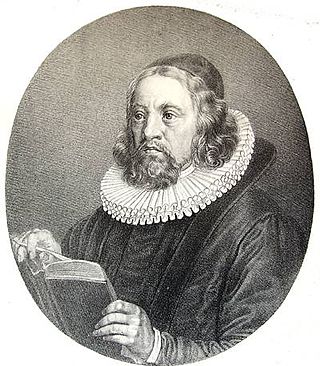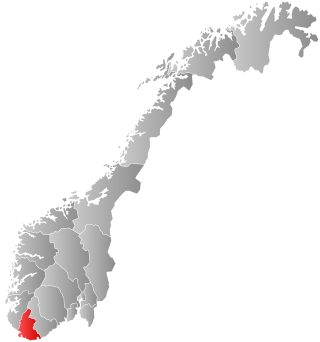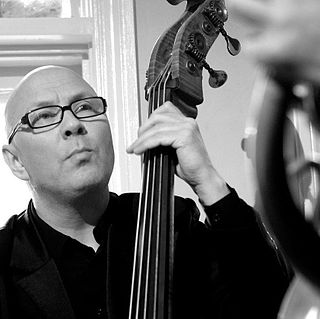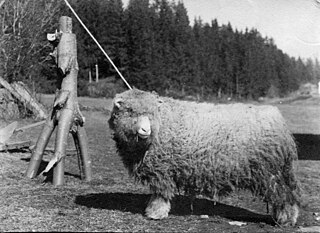
Maglemosian is the name given to a culture of the early Mesolithic period in Northern Europe. In Scandinavia, the culture was succeeded by the Kongemose culture.

Knut Ødegård is a Norwegian poet.

Aksel Sandemose was a Danish-Norwegian writer whose works frequently elucidate the theme that the repressions of society lead to violence.
The aristocracy of Norway is the modern and medieval aristocracy in Norway. Additionally, there have been economical, political, and military elites that—relating to the main lines of Norway's history—are generally accepted as nominal predecessors of the aforementioned. Since the 16th century, modern aristocracy is known as nobility.

Thomas Hansen Kingo was a Danish bishop, poet and hymnwriter born in Slangerup, near Copenhagen. His work marked the high point of Danish baroque poetry.

Øvre Sirdal is a former municipality that was located in the old Vest-Agder county in Norway. The 1,156-square-kilometre (446 sq mi) municipality existed from 1905 until its dissolution in 1960. It was located in the northern part of the present-day municipality of Sirdal in Agder county. The administrative centre was the village of Lunde where Lunde Church is located.

Danish nobility is a social class and a former estate in the Kingdom of Denmark. The nobility has official recognition in Denmark, a monarchy. Its legal privileges were abolished with the constitution of 1849. Some of the families still own and reside in castles or country houses. A minority of nobles still belong to the elite, and they are as such present at royal events where they hold court posts, are guests, or are objects of media coverage, for example Kanal 4's TV-hostess Caroline Fleming née Baroness Iuel-Brockdorff. Some of them own and manage companies or have leading positions within business, banking, diplomacy and NGOs.
Nord-Bindalen or Nordbindalen is a former administrative entity in the Helgeland district of Northern Norway. It was in existence from 1658 to 1852. It is located in the present-day municipality of Bindal.
Sør-Bindalen or Sørbindalen is a former administrative entity in the Namdalen district of Trøndelag, Norway. It was in existence from 1658 to 1852. It is located in the present-day municipality of Bindal in Nordland county.
Sven Rudolf Sidenius Gyldmark was a Danish film score composer. He was the brother of Hugo Gyldmark and Leonard who were also composers.

Jens Toller Rosenheim, was a Norwegian nobleman, jurist and official.
Events in the year 1710 in Norway.

Ole Amund Gjersvik is a Norwegian Jazz musician and composer, central on the Bergen jazz scene and known from a number of record releases.

Marquis of Lister was a title of the Norwegian nobility. Lista lies in Southern Norway.

Tautersheep is an extinct breed of sheep from the island Tautra in Frosta in Norway. It was a sheep with fine wool resembling the Spanish merino. The origin of the breed is disputed, but could possibly be merino sheep brought to Tautra cloister several hundred years ago and afterwards mixed with old Norse sheep. Others have claimed that the origin is the English Ryeland, which suggest that the Tautersheep was a far younger race.

The Alternative is a green and pro-European political party in Denmark. The party was publicly launched on 27 November 2013 by former Minister of Culture Uffe Elbæk and Josephine Fock; Elbæk had been a parliamentarian for the Social Liberal Party. Elbæk was the leader of the party until February 2020, where he stepped down and was succeeded by Fock. Currently the party is led by Franciska Rosenkilde. It collaborates with DiEM25 at the European level. The Alternative regards itself as a political movement and a cultural voice, as well as a political party.

General elections were held in the Kingdom of Denmark on 1 November 2022, except in the Faroe Islands, where they were held on 31 October as 1 November was a national day of mourning for victims at sea. Of the 179 members of the Folketing, 175 were elected in Denmark proper, two in the Faroes and two in Greenland. The elections were called on 5 October following an ultimatum to the government by the Social Liberals due to the outcome of a report on the 2020 Danish mink cull by the Mink Commission, which was critical of the government. Voter turnout was 84% in Denmark, 48% in Greenland, and 71% in the Faroes, with a combined turnout of 84% for the realm as a whole.

Drew Kolstrup, known professionally as Drew Sycamore, is a Danish singer and songwriter.













